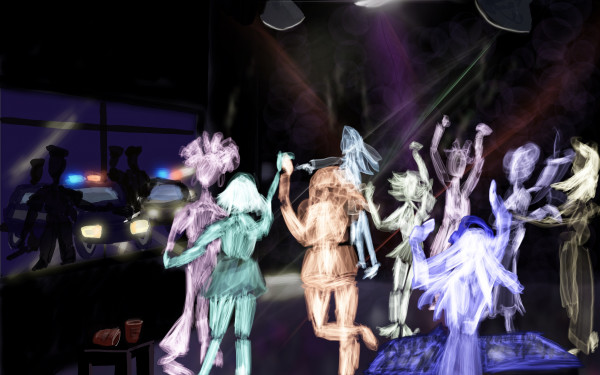Starry Night, Blood Moon: Observing a Blood Moon with the Royal Astronomical Society
I was buzzing with excitement when I heard that The Royal Astronomical Society of Canada (RASC) Montreal was hosting a public observation night, plus McGill’s Astronomy club had organized a trip to Morgan Arboretum—a forested reserve ideal for night sky observations—all to witness the much-anticipated total lunar eclipse between September 27 and 28.
I eagerly bought a ticket a few days prior to the main event, and started counting the days. The clear skies of Sunday night promised a spectacular, out-of-this-world view of the blood-orange moon, and accordingly, I amped up my level of expectations, and set off, backpack and all, to the main entrance of McGill, where two buses awaited arrivals.
We arrived at the observatory around 8:00pm. We dismounted from the bus, and the organizers led us to an open field surrounded by acres of forest.
Looking up, down and around, I studied my surroundings, and found absolute darkness. It was pitch black, with the silver moon hanging above our heads, anticipating the passage of time, itching to put on its red cloak. In the heart of the open field was the fancy 14” robotic observatory.
About 200 people had gathered and quickly dispersed about the field. Some had set up their private telescopes, others were tinkering with their HD cameras and some others were lying on the grass, wrapped up in blankets, watching the starry night.
There we were, about 30 minutes away from the hustle and bustle of downtown, in the remote areas of Sainte-Anne-de-Bellevue, and I felt thoroughly detached from the strained life of late assignments and Saturday night parties. This was a different kind of excitement; like going back home after years of wandering.
In one of the cabins, Andrew Fazekas, a member of the RASC and an astronomy enthusiast, gave a brief presentation on the Total Lunar Eclipse: The moon would enter the penumbra at about 8:40 p.m., and gradually be bitten into crescents (Earth’s shadow on the moon), until, at 10:11 p.m. the moon would enter the umbra and turn a red-orange shade.
It was also pointed out that this year’s lunar eclipse was the convergence of three distinct lunar events: a total eclipse, coinciding with a supermoon, when the moon is at its closest to the earth, and a harvest moon, or the moon nearest to the fall equinox.
This was a truly rare event, and not wanting to miss another second of it, I hurriedly made my way out of the cabin, out into the open field and lied on the wet grass gazing at the heavens.
The night sky was a spectacle, truly a feast for the eyes. The twinkling stars seemed to dance in celebration of the silvery moon, giggling as if full of the majesty of the universe’s secrets. Coming out of my imaginative state of mind, I realized the moon was slowly making its way into the Earth’s umbra.
There was a half-bitten moon suspended in the sky. It was happening. I could almost see an orange spot that would potentially dominate the moon’s shade. Finally, at about 10:09 p.m., the moon was completely blood-orange.
Everyone scrambled to find their cameras, or get in line for the telescope to see the beautiful blob of red up close. Unfortunately, our moment with the red moon was short-lived. No sooner had it undergone its color transformation than the sky got overcast! The clouds completely obstructed our view of the moon; we had reached the anticlimax, and it was time to go home.
The trip, however, was well worth it in the end. On the bus ride back home, I began to realize the immensity and depth of astronomy, and how it truly humbles the soul. Astronomy challenges you to look outside yourself; to peer into the farthest galaxies a billion light-years away, only to realize the insignificance of the ordinary, the quotidian; the insignificance of the quest to find those red shoes that match perfectly with your lipstick.
Witnessing these amazing celestial events always reminds me that we are all part of something much bigger than ourselves.

_600_832_s.png)

_600_375_s_c1.png)
